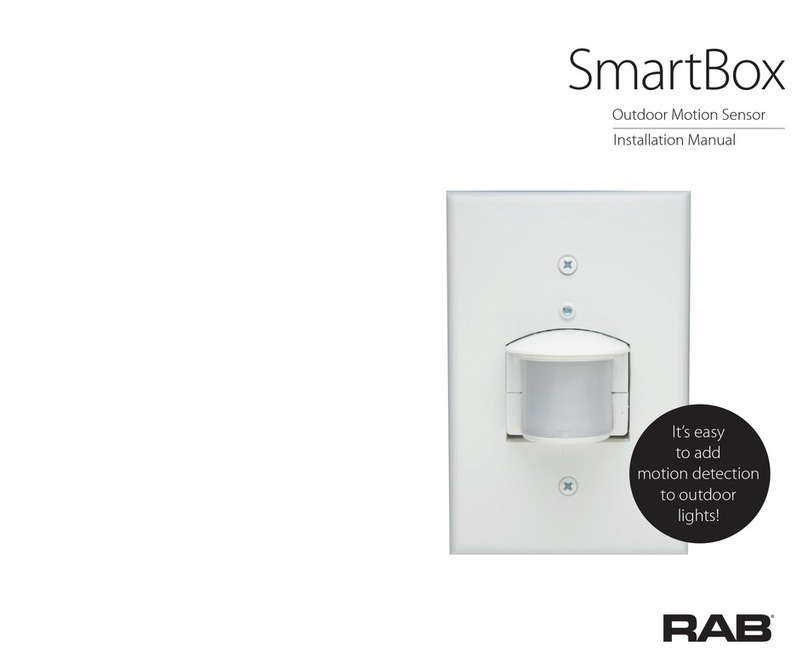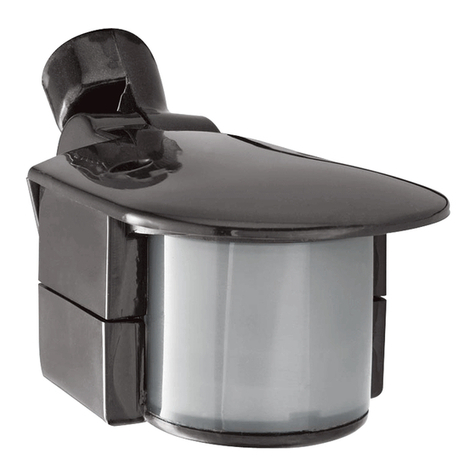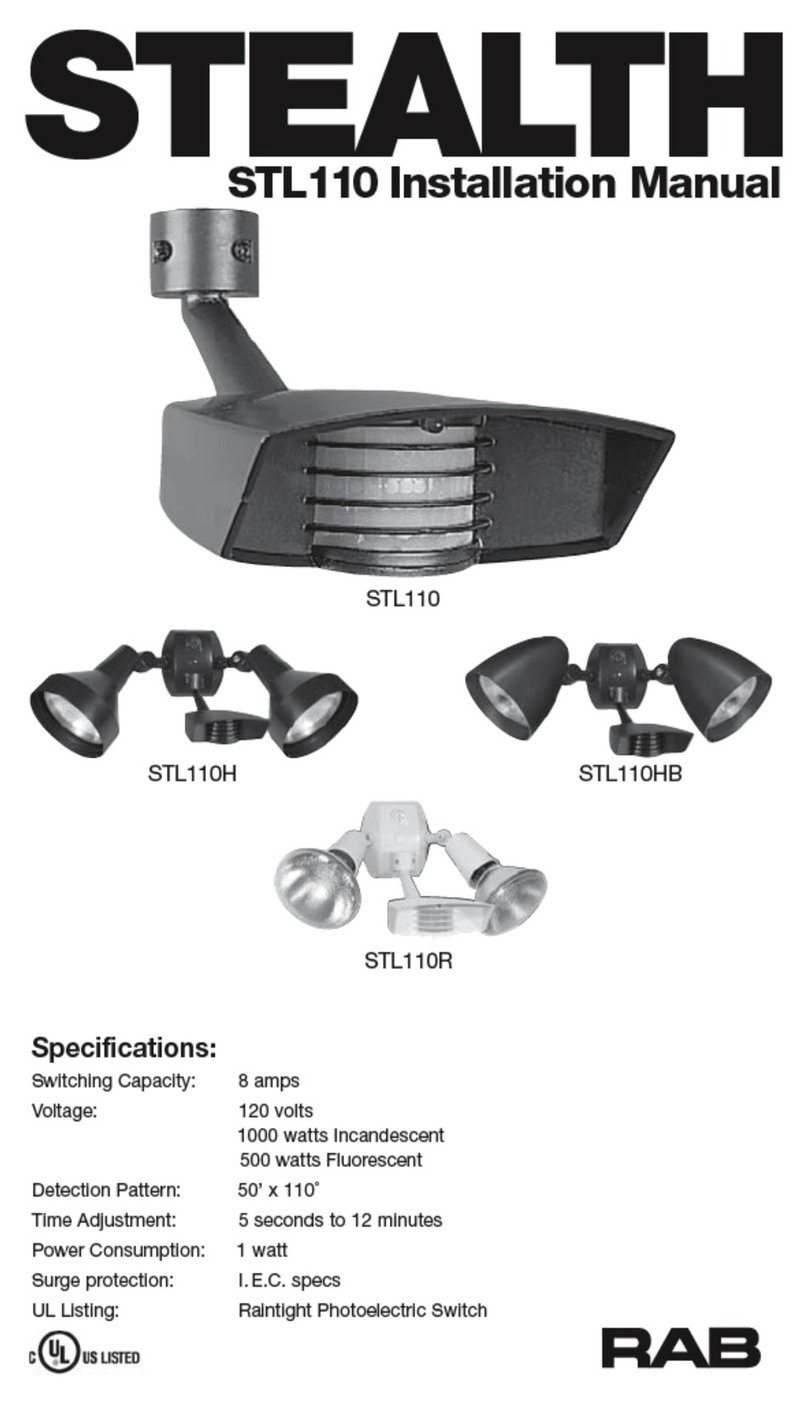
7
Technical Tips:
Lights Do Not Turn O
1. Make sure the sensor is not in
Manual Override Mode. Turn
power OFF for 10 seconds and
then ON again. Sensor will be
in Test Mode for approximately
5 minutes, then it will switch to
Auto Mode with lights o, ready to
detect movement.
2. Make sure sensor is not aimed
at or mounted over something
that would move or change
temperature, such as waving
branches, water, air conditioners,
windows or heating vents, even
on neighboring property.You can
test for infrared sources in the area
by placing a box or bag over the
sensor and putting the sensor into
test mode. This should keep the
lights o. Wave your hand inside
bag in front of sensor, and lights
should go on, time out, and go o.
If sensor operates properly with
bag covering, check item #4-7.
Problem: Sensor is triggered by
unwanted movement or heat
source.
Solution:
• Aim sensor away from movement
• Mask lens in the direction of source
• Lower sensitivity control setting
3. Make sure sensor and lights are
mounted rmly and do not move,
even slightly, when touched. If
they move, tighten all screws.
4. Make sure sensor is not mounted
on an unstable source, such as a
tree or pole that will move in the
wind.
Problem: Movement of tree triggers
sensor.
Solution: Mount on stable surface.
5. Was sensor wired hot? If so,
circuitry may have been damaged.
6. Make sure sensor is not aimed
within 20ft of a road.
Problem: Passing cars activate
sensor.
Solution: A 20ft safety zone and
lower sensitivity are recommended
to avoid activation from passing cars.
7. Make sure heat from lights is
not triggering sensor. Make sure
sensor is below and as far as
possible from lights.
RIGHT!WRONG!
20’ Safety Zone
RIGHT!
WRONG
8
Technical Tips:
Lights Turn On and O Incorrectly
1. Make sure the sensor is installed
on its own dedicated circuit, free
of motor loads such as HVAC
equiptment, kitchen appliances, or
garage door openers.
2. It is not recommended to wire
sensors in parallel. More than
one sensor wired together makes
them dicult to troubleshoot.
Disconnect multiple sensors and
test separately.
3. Keep all people completely out of
the detection pattern to make sure
the sensor is not detecting them.
4. Make sure sensor is located below
and as far as possible from its
lights. Heat from the lights may
trigger the sensor.
Solution: Move sensor below and
away from the lights.
5. Moths can be attracted to the
lights and y close to the sensor
causing triggering. Reducing the
sensitivity may help.
6. Make sure sensor is not aimed
within 20 ft of a road or sidewalk.
Passing cars will activate sensor.
Solution: A 20ft safety zone and
reduced sensitivity are recommended
to avoid activation from passing cars.
7. Heavy rain, snow, or high
winds may activate the sensor
occaisionally. Reduce sensitivity
control slightly until problem
stops.
8. Make sure lights are not reecting
back into sensor. Check for white
or reective surfaces close to the
sensor.
Solution: Aim sensor away from
reective objects or move the objects
lower and reduce sensitivity.
9. Self-ballasted PL lamps may cause
cycling (on-o ).
10. Check item #2, 4, 5, 6 and 7 under
“If Lights Do Not Turn O.”
20’ Safety Zone
W
R
O
N
G
RIGHT
WRONG
RIGHT!




























